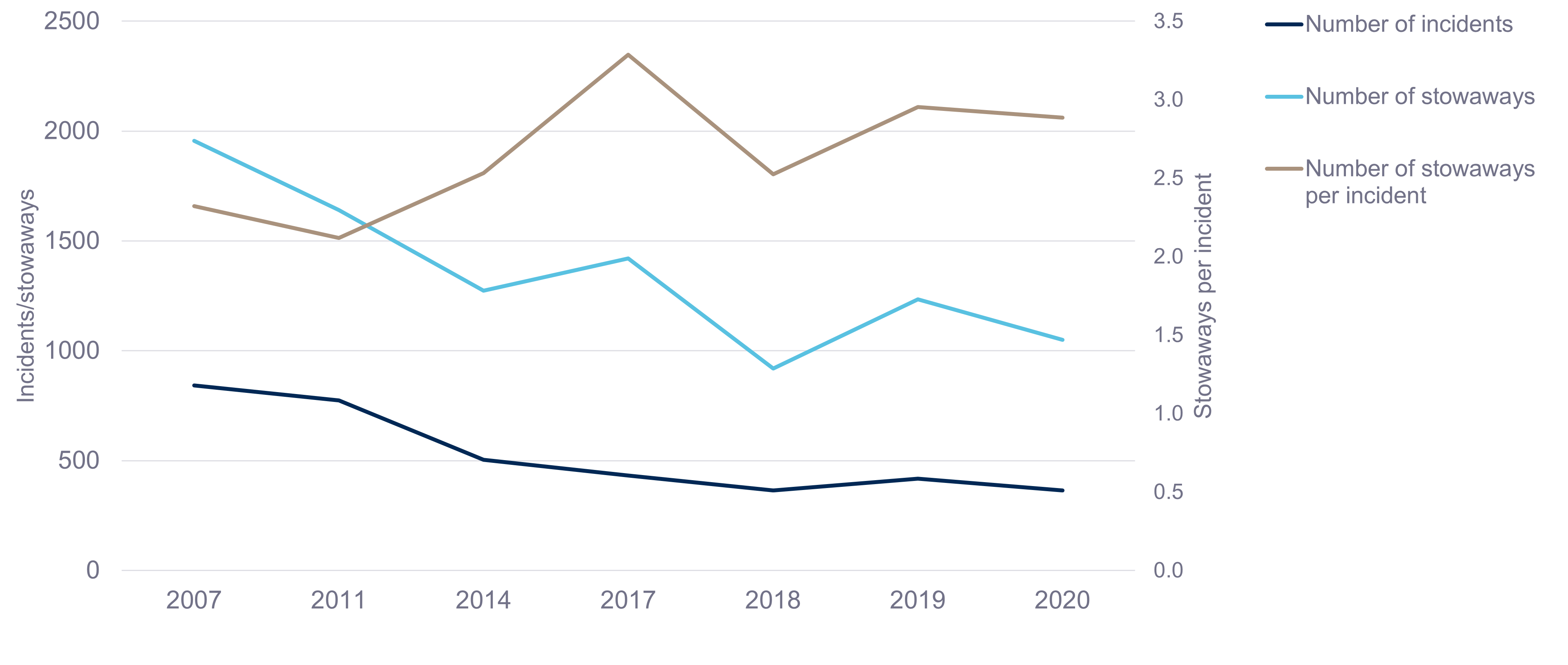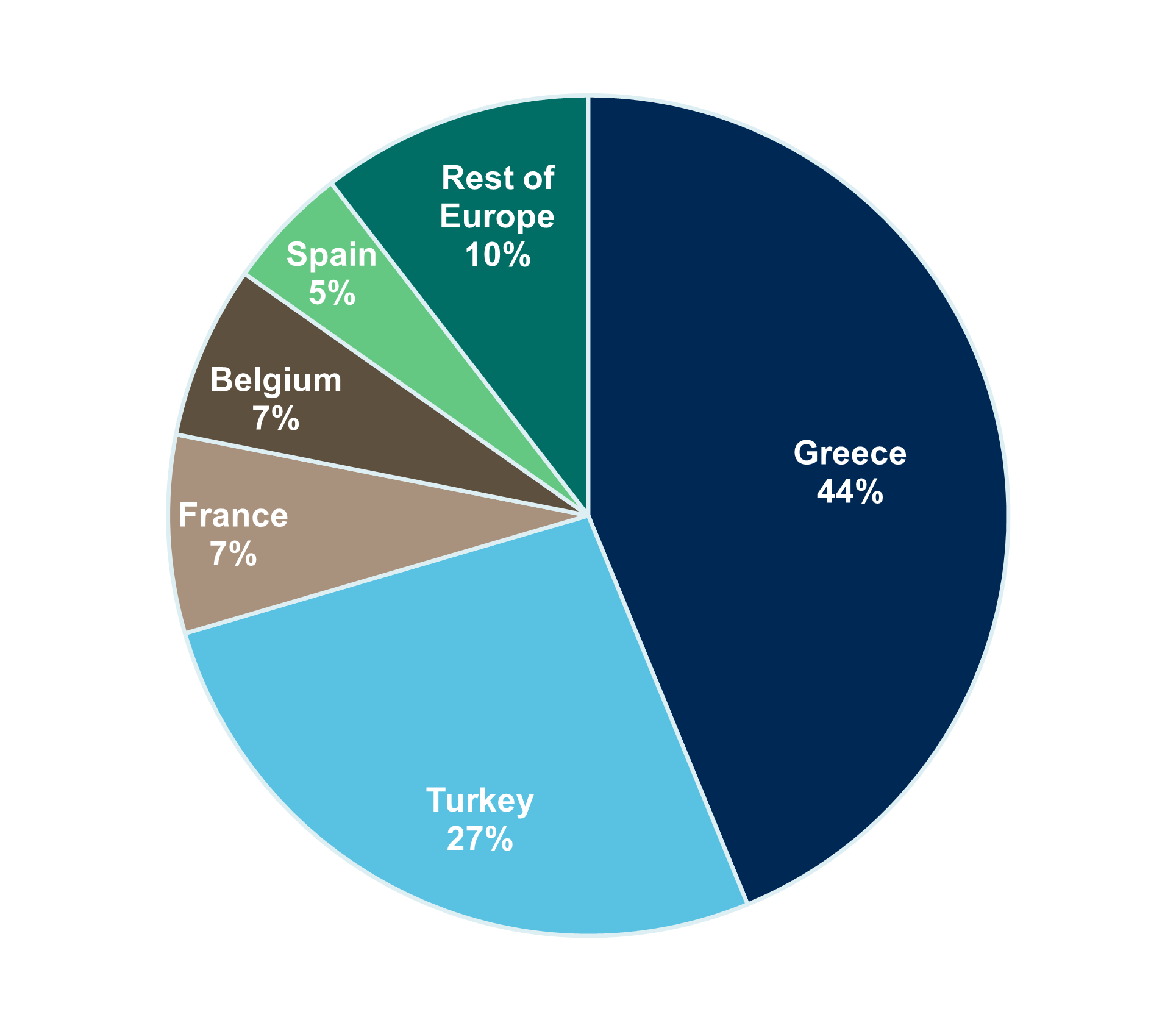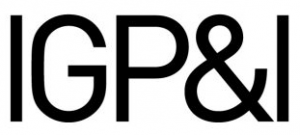Gard has recently published an updated comprehensive guidance on stowaways outlining the problem, the applicable regulations, assessing the risk of stowaways, prevention at port and humane handling of stowaways found on board. In preparation of the guide, we reviewed the trends over the last several years and share our observations.

Gard releases updated Guidance on Stowaways
Written by
Kristin Urdahl
,
Lene-Camilla Nordlie
Published 28 March 2023
Click HERE to go directly to the Guidance to Stowaways.
Incident trends and regional hot spots
The International Group of P&I Clubs (IGP&I) carries out regular data collection exercises in respect of stowaways. Based on claims experience within all the member clubs, locations where stowaways are a common problem are identified along with the nationalities of persons stowing away and the average cost of stowaway incidents.
While the IGP&I data collection is primarily meant to compliment the stowaway cases reported to the IMO in its Global Integrated Shipping System (GISIS), it is worth noting that the number of incidents recorded by the IGP&I is generally higher than the those submitted via the IMO-system. However, even if the IMO GISIS data are more moderate in terms of the total number of incidents and stowaways, some of the observed trends concerning regional ‘hot spots’ for stowaway, as well as stowaways’ nationalities are very similar to those identified in the IGP&I data.
The IGP&I and IMO GISIS data for the period 2013 to 2022 show the following trends:
Overall incident trends (Source IGP&I)
Number of incidents and stowaways

Cost of incidents and stowaways

The number of stowaway incidents has more than halved since IGP&Is carried out its first data collection exercise for the 2007/8 policy year but has remained fairly level over the past five years.
The total number of stowaways involved has also decreased, but not at the same rate as the incident figures. This means that the number of stowaways per incident has been growing, and the data would seem to suggest that the current average is close to three stowaways per incident.
Whilst the total cost net of deductible including fines imposed by states on shipowners, has dropped, the cost per stowaway incident, as well as per stowaway, has risen. It is also important to note that the cost to shipowners is higher than that incurred by the Clubs as, in addition to their deductible, shipowners are likely to incur other costs, which are not insured,
Regional hotspots, by region of embarkation (Source IMO GISIS)

Ports on the African continent continued to be the main hot spots for stowaway embarkations, even if the overall number of incidents reported from ports in Africa have decreased.
European ports started to feature in the statistics in 2017 and the number of incidents reported from the European continent has remained high thereafter.
Top five countries of embarkation 2018 - 2022 (Source IMO GISIS)
African continent

European continent

The rate of stowaway embarkations in South African ports, which historically have been considered high risk ports, has fallen. The same goes for ports in some of the West African countries. However, the port of Durban in South Africa, and West African ports such as Lagos in Nigeria, Conakry in Guinea, Dakar in Senegal, must still be treated as ports with high risk of stowaways.
It is well known that many North African countries have become major transit points for African and Arab migrants trying to reach Europe to escape war and poverty and there is a clear upward trend in the number of incidents reported from the Maghreb region of North Africa, particularly from the port of Casablanca in Morocco and Rades/Tunis in Tunisia.
The majority of stowaway embarkations in Europe were reported from ports in Greece and Turkey, but also ports in France and Belgium that are facing the English Channel were popular spots for persons attempting to stow away.
Prevention starts with risk awareness
As described in the guide, the core strategy is to ensure that no unauthorized persons are able to gain access to the ship and all those who have been authorized to board, disembark before sailing. Proper access control relies on crew members who are adequately briefed about how the ship’s trading patterns affect the stowaway risk and the relevant security measures to be implemented. Once aboard, stowaways adversely affect crew wellbeing. Crew may have to work longer hours because they also must take care of the stowaways, the Master will have to spend more time on communicating and planning for disembarkation, possible deviations and in port arrangements – and certainly, there is a significant safety element. Prevention is clearly better than cure.
The guide includes detailed advice for handling of stowaways found onboard. With security in mind, stowaways should be treated humanely including adequate food and water and medical treatment if required. Stowaways have been a risk as long as ships have sailed the seas and will remain so. Some stowaways qualify for refugee status while others are economic migrants. For the 2023 policy year, Rule 32 which addresses cover for costs related to stowaways was amended. The wording now makes it clear that there is no difference between a refugee and an economic migrant when it comes to cover for costs.
The Guidance to Stowaways is available here.


